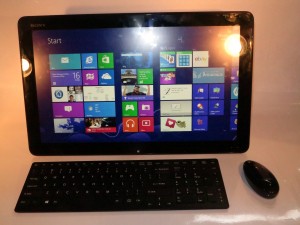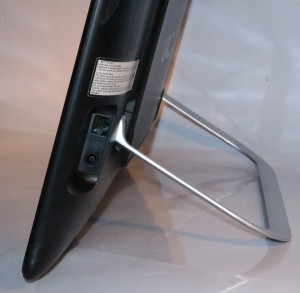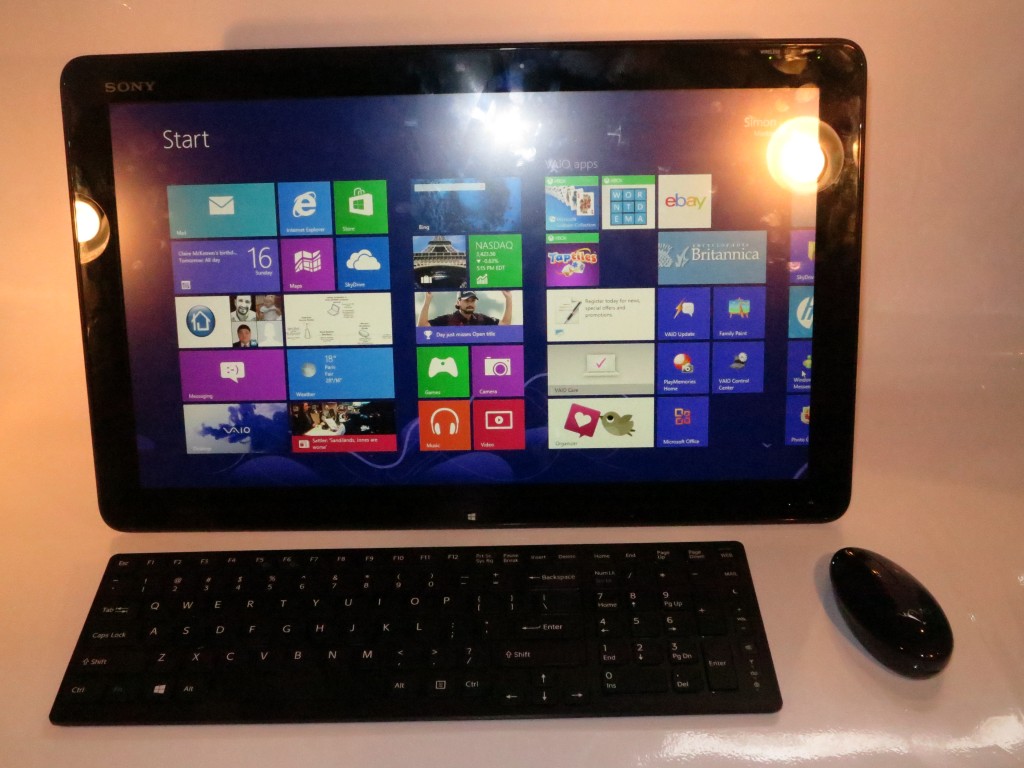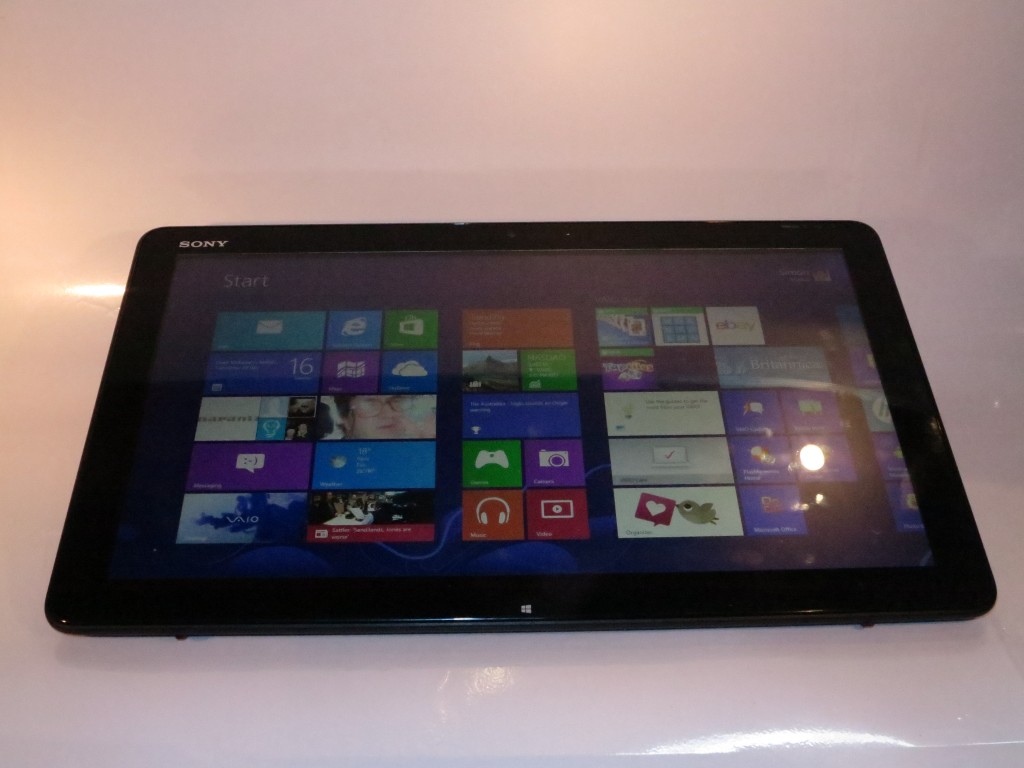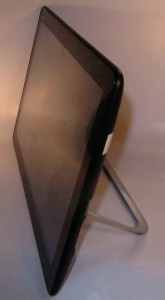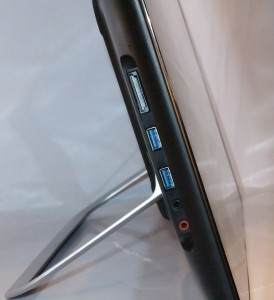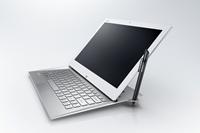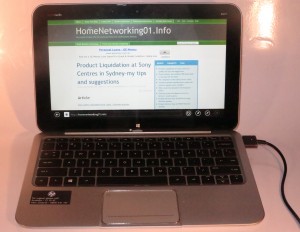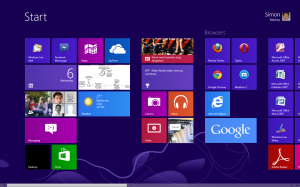Adaptive All-In-One Computers–Where do I see them fit in?
As I have covered in this Website before, there is a new class of computer that is bridging the gap between the clamshell laptop and the all-in-one desktop. These are known as the “Adaptive All-In-One” computers but are also called “desktop tablets” or “mobile all-in-one” computers.
What are these computers?
This class of computer is an 18”-21” tablet computer that has “regular computer” credentials such as using computing horsepower typically used in a desktop or laptop computer rather than what would be used in a tablet like the Apple iPad. They are able to be set up as a tablet which is primarily touch operated or, through the use of a kickstand integrated in the tablet and a wireless keyboard and mouse, or a detachable pedestal which has a keyboard and mouse connected to it, they can he used as a conventional all-in-one desktop computer.
As for software, they can run on “regular-computer” operating systems like Windows 8 or a desktop Linux distribution. Users can then run the applications and games that they are able to run on a regular computer. This is being augmented through the Windows Store which is filling up with many applications and games that take advantage of the touchscreen.
The best example of this class of computer and one I have reviewed on HomeNetworking01.info is the Sony VAIO Tap 20. But other manufacturers are showing up with similar computers like the Dell XPS 18 and the HP Envy Rove 20 which is on the verge of being released as I write this article.
Where do these computers belong in the computing market?
Typically they are positioned between a 17” desktop-replacement laptop computer and a 21” all-in-one desktop or a low-profile desktop that works with a 21” screen. They also are pitched to stand between a convertible laptop or large tablet and a touchscreen-capable laptop, desktop or all-in-one when it comes to touch computing. So they end up being marketed as a hybrid class of computer which stands between a tablet, laptop or desktop form factor.
How will they benefit users in the home or small-business
I primarily see these computers fulfilling the demands of a transportable lifestyle computer. Here, it would be seen as a highly-capable large-screen alternative to a 10” tablet like an iPad or Android tablet.
One application would be large-area reading and viewing. This would range from surfing the Web through browsing email, Facebook or Twitter to reading electronic-newspaper apps or watching catch-up TV in your favourite armchair or couch. It would also underscore “second-screen” functionality while watching TV, such as use of scoreboard apps during sportscasts, engaging in online voting or using IMDB or Wikipedia to check a fact relating to what you are watching (to settle that argument).
In the kitchen, the integrated kickstand that most of these computers have would make them highly relevant for referring to online recipes while cooking. This avoids the need to rest the computer precariously on that bowl of fruit and fearing an accident would happen or the touchscreen would be covered with flour.
Of course, two or more people could comfortably pore over the same information such as an email, Facebook News Feed or photo album. Some of these units like the upcoming HP Envy Rove 20 have a manual switch which spins the display 90 degrees to allow another person to see the screen without you having to swivel the computer.
Another highly-promoted activity is group gaming. This will come in to play with computer-based “takes” of the classic board, card and casino games where these games will allow two or more human players to play on the one machine. In some cases, the machine may be able to play as one or more of the players, and / or simply represent one or more online players while preserving the rules of the game and, where applicable, rolling dice or shuffling a deck of cards.
Of course, some games like “old-school” arcade games, pinball games and strategy games will gain a level of freshness when you play them on these computers. For example, a person who grew up in the 80s may find that playing a Windows 8 version of PacMan or Galaga may remind them of playing the game on one of those “table-style” arcade games that were popular then; or a game like Civilization V takes so well to you literally moving the characters or teams over the large playfield created on the large screen.
In the small business, the “Adaptive All-In-One” could become useful in the customer-service space. Here, you could have point-of-sale terminals or similar terminals that use the increased space to show more items or options for the sales assistant to use while completing the sale.
These computers could also come in to their own when showing information to colleagues, partners or clients, whether it be certain cells of interest in a spreadsheet or a PDF file or a presentation that you can easily flick through to get to the salient parts.
The main feature that I have noticed with this class of computer when I reviewed the Sony VAIO Tap 20 was that fact that they offer the balance between a desktop-replacement laptop that you can easily take around the house or put away when not needed and a desktop, especially an all-in-one desktop, that has the large screen area. This is made much easier with those “adaptive all-in-one” computers that use U-shaped metal kickstands like what the VAIO Tap 20 is equipped with. Here, these kickstand can easily double as a carrying handle for the computer in the same manner as the carrying handle integrated in to a boombox, portable TV set or small sewing machine.
Who would buy these computers?
These could be bought by most people as an alternative to a laptop that is used primarily at the home and taken out and about on rare occasions. It is more so when the user values a large screen while valuing an easily-portable computer.
The memory and hard disk capacities would show up the Adaptive All-In-One computers as being credible for a sole computer or primary-use computer for most people rather than the secondary computer.that you may think of typically.with this device class.
My recommendations about buying these computers
If you do buy an “Adaptive All-In-One” computer, I would recommend that you purchase an accessory optical drive if you expect the computer to be your “sole” computer. This will be of importance if you still like to share data on the low-cost optical disks or buy music and video content on optical disks.
Some of the optical drives may be available as an “expansion module” / docking-station accessory with Ethernet connectivity, extra USB ports, a sound module and other functions. Here this can come in handy if you think of using extra peripherals with your Adaptive All-In-One computer.
Conclusion
The Adaptive All-In-One computer will definitely show up as a computer type that will please a lot of users who want something to fill the gap between a transportable regular computer and a large screen. It doesn’t matter whether you use these computers as your main or sole computer or as an additional computer and will earn their keep as a “lifestyle” computer.

